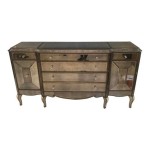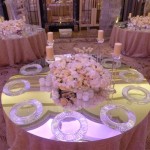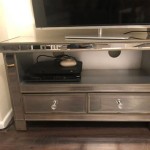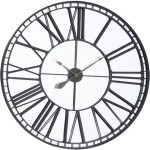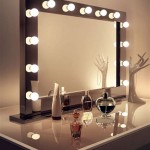How To Tell If a Mirror Is Antique
Antique mirrors, with their intricate frames and aged patina, can add a touch of history and elegance to any home. However, discerning a genuine antique from a modern reproduction can be challenging. This guide provides helpful tips to help you determine if your mirror is truly an antique.
1. Examine the Frame
The frame is often the most telling indicator of a mirror's age. Antique frames are typically crafted from materials like wood, metal, or plaster, and often display signs of wear and tear. Here's what to look for:
- Wood: Antique wood frames often show signs of aging, such as scratches, dents, and discoloration. The wood may be hand-carved with intricate details, and the finish may be chipped or worn. Look for evidence of traditional joinery techniques, such as mortise and tenon joints, dovetail joints, or hand-cut nails.
- Metal: Antique metal frames, like those made from brass or iron, may have a verdigris patina—a green or blue coating that develops over time. They might also display signs of corrosion or wear from years of use.
- Plaster: Antique plaster frames are typically ornate and heavily decorated. They may have gesso, a chalk-based primer, applied to the surface, which creates a textured look. Look for cracks or chips in the plaster, indicating age.
While signs of wear are often good indicators of age, be cautious of overly distressed or artificially aged frames, which may signify a modern reproduction.
2. Inspect the Glass
The glass of an antique mirror can also provide clues to its age. Antique glass is typically hand-blown and exhibits certain characteristics that differ from modern manufactured glass.
- Distortion and Bubbles: Antique glass often has a slight distortion or waviness, and it may contain tiny bubbles or imperfections. This is due to the hand-blown nature of the glass making process.
- Thickness and Texture: Antique mirror glass is usually thicker than modern glass. It may also have a slightly textured surface, due to the way it was made.
- Mercury Backing: Antique mirrors used to be backed with mercury amalgam, a toxic mixture of mercury and tin. This method creates a silvery reflective surface, but it can be identified by its unique appearance and a faint, metallic odor. However, beware that lead-based paints were also used in the past, and this method is not safe to handle.
Keep in mind that mercury backing is not always a reliable indicator of an antique mirror, as some modern reproductions have been made with a mercury backing for authenticity.
3. Research the Style and History
The style and historical context of the mirror are crucial for determining its age and authenticity. Researching the mirror's design, materials, and manufacturing techniques can be a valuable tool.
- Style: Identify the style of the mirror, such as Victorian, Art Deco, or Georgian. This will help narrow down its potential age.
- Historical Context: Consider the historical context of the mirror's design and materials. For example, a mirror with a Rococo style frame would likely date back to the 18th century.
- Markings and Labels: Look for makers' marks, labels, or inscriptions on the mirror or its frame. These can provide valuable information about the mirror's origin and date of manufacture.
Consulting a reputable antique dealer, appraiser, or historical society can provide further insight into the mirror's age and potential value.
While these guidelines can help you better understand the age and authenticity of a mirror, it is important to remember that determining the authenticity of an antique mirror requires expert knowledge and careful evaluation. If you are considering purchasing an antique mirror, always consult with a reputable antique dealer or appraiser for a professional opinion.

How Do I Know If My Mirror Is Antique

Antique Mirrors A Guide To Identifying Collecting

How To Determine The Value Of An Old Mirror Hobbylark

How To Appraise Antique Mirrors Value My Stuff

Antique Mirrors A Guide To Identifying Collecting

How To Appraise Antique Mirrors Value My Stuff

Antique Mirrors A Guide To Identifying Collecting

How To Appraise Antique Mirrors Value My Stuff

Antique Mirrors A Guide To Identifying Collecting

Antique Mirrors A Guide To Identifying Collecting

